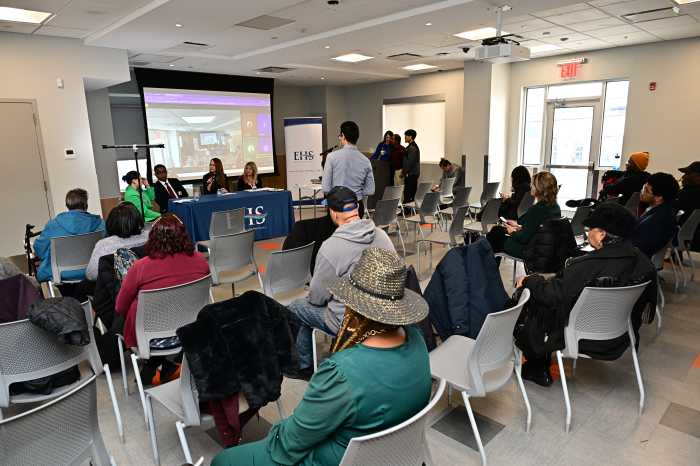At a recent business workshop local small business owners and employees learned that although the Affordable Care Act (ACA) will give them necessary health coverage, it may come at a high price.
Sher Sparano, president of the Benefits Advisory Service, broke down the law’s effects on small businesses to nearly a dozen uncertain and bewildered professionals at the event, which was hosted by the Queens Chamber of Commerce on July 20.
“Our goal was for people to walk away with a sense of how to prepare,” Sparano said. “They need help and guidance along the way as the law changes.”
Although businesses with fewer than 50 employees are not required to provide insurance for their workers, they are still urged to make sure their employees are covered.
To encourage these small businesses to invest in insurance for their companies, those with fewer than 25 full-time employees averaging $50,000 yearly, could apply for a 35 percent tax break. That will increase to 50 percent in 2014.
Unfortunately, only 170,000 out of 4 million possible businesses applied since 2010, and Sparano says that has to change.
“That’s one of the things we told small businesses, to understand that if they were entitled something, get it,” Sparano said. “I don’t care if they’re going to give me back $500. You have to apply to see if you’re going to get this credit.”
In 2014, New York will establish its exchange, or state-run list of insurance options. Small businesses will be able to provide coverage to their employees at lower costs through these lower priced plans.
Business expenses will rise to provide insurance, but it may be an essential step for health care reform.
“There are a lot of small businesses today that don’t give health insurance and that will change,” Sparano said. “If we want the health care act to succeed it has to happen like this.”
Through ACA, a state could choose whether or not to expand its Medicaid system. Governor Andrew Cuomo elected to increase New York State’s system, which will make more people eligible to access Medicare.
Individual Americans who make about $15,000 a year and families of four that earn $30,000, will be able to get Medicaid, up from approximately $9,000 and $15,000 respectively.
Sparano mentioned sections of the law that will go in effect soon, such as insurance carriers expanding no-cost preventive services for women, and companies providing summaries of benefits and coverage and notifying employees about the state-run exchanges.
Also on August 1, customers will receive Medical Loss Ratio (MLR) rebates. MLR rebates are distributed when insurance companies spend less than 80 percent of premiums on medical care for plan holders instead of administration, like salaries and marketing.
When businesses get the rebates they will distribute the money proportionally to workers enrolled in company health plans, according to how much their plans cost.
“The most practical information I learned was about the rebates,” said Phil Robinson, an employee for Petracca & Sons construction company in Flushing. “In my mind it was just a check that would arrive at the employee’s house.”
MLR rebates will give nearly 12.8 million Americans more than $1.1 billion this year, according to the Department of Health and Human Services.
Towards the end of her presentation, Sparano recommended that smaller businesses that want to provide health insurance and save money adopt wellness programs.
“The healthier the population is the better the experience would be,” Sparano said. “It lowers the premium, and you get better more productive hours out of your staff.”



































